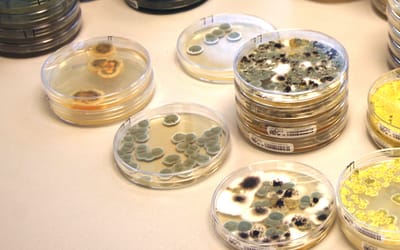The Latest From PAS
The prevention of product recall due to incorrect allergen free labelling
The FSA recently issued a Food Alert due to the incorrect labelling of a packet meal which claimed to be milk and lactose free. If you have any concerns about the efficacy of the claims you are making on your product labelling then RHM Technology's Allergy Team can...
The prevention of product recall due to incorrect shelf life
Recently the FSA issued a Food Alert concerning a humus product that had been given an excessive shelf life. RHM Technology's Complete Microbiology Service includes "Shelf Life Assurance Testing" wherein we design and carry out the most suitable shelf life trial...
Mycotoxins in Baby Foods
The UK Food Standards Agency have recently published the results of a survey of various mycotoxins (ochratoxin A, aflatoxins and patulin) in 199 baby and infant food products. www.food.gov.uk/science/surveillance/fsis2004branch/fsis6804 Overall the level of mycotoxin...
Agencies step up action on Spanish egg-linked salmonella outbreaks
The Health Protection Agency and the Food Standards Agency are stepping up action to protect the public's health following continued outbreaks of particular strains of salmonella since 2002, many of which have been linked to Spanish eggs used in the catering trade....
Chemical Reactions in Food V conference in Prague
Two researchers from RHMT recently attended the Chemical Reactions in Food V conference in Prague www.rhmtech.co.uk/pdf/finprog.pdf where they were showcasing RHMT's latest advances in contaminant research. For acrylamide, a new rapid and sensitive method has been...
Food Processing and Trichothecene Mycotoxins Publication
A paper, written by two RHM Technology scientists, reviewing the current state of knowledge on food processing and trichothecene mycotoxins, has just been published (Toxicology Letters (2004) 153, 51-59). Trichothecenes (including deoxynivalenol) frequently occur in...
Erucic Acid in Oil Preserved Foods
The Food Standards Agency have reported the results of a survey on erucic acid in pickles, sauces and preserved vegetables imported from parts of Bangladesh, China, Pakistan and India, in which illegal levels were found in over 10% of products Erucic acid is a natural...
EFSA Opinion on Zearalenone in Animal Feeds
The EFSA (European Food Safety Authority) Scientific Panel on Contaminants has released an Opinion on zearalenone in animal feeds. Zearalenone (ZEA or F2) is a mycotoxin produced by cereal species of Fusarium fungi (including F.graminearum). These fungi are common,...
Salmonella Outbreaks
Two outbreaks of Salmonella infection have occurred recently. The first took place in Downpatrick Northern Ireland where over 100 cases of diarrhoea and vomiting were traced to a S. typhimurium infection. The source of this infection was reported to be a small hot...
Detection of Meat in Vegetarian Foods
Scientists at RHM Technology have carried out research on behalf of the Food Standards Agency to help ensure that the meat-free food eaten by vegetarians and people from certain ethnic groups is not contaminated by meat. Our DNA based technique, verified by the...
Aflatoxin Mycotoxins in Nuts and Nut Products
Aflatoxins (B1, B2, G1 and G2) are highly toxic mycotoxins that can occur naturally in certain food crops including nuts (e.g. Brazil, peanut, pistachios, almonds). Due to concerns about their toxicity regulatory limits are in place, a recent Food Standards Agency...
An amendment to the Labeling Directive
An amendment to the Labeling Directive (2003/89/EC) requires the mandatory inclusion on food labels of the following allergenic ingredients and their derivatives: cereals containing gluten, fish, crustaceans, egg, peanut, milk and dairy products (including lactose),...












